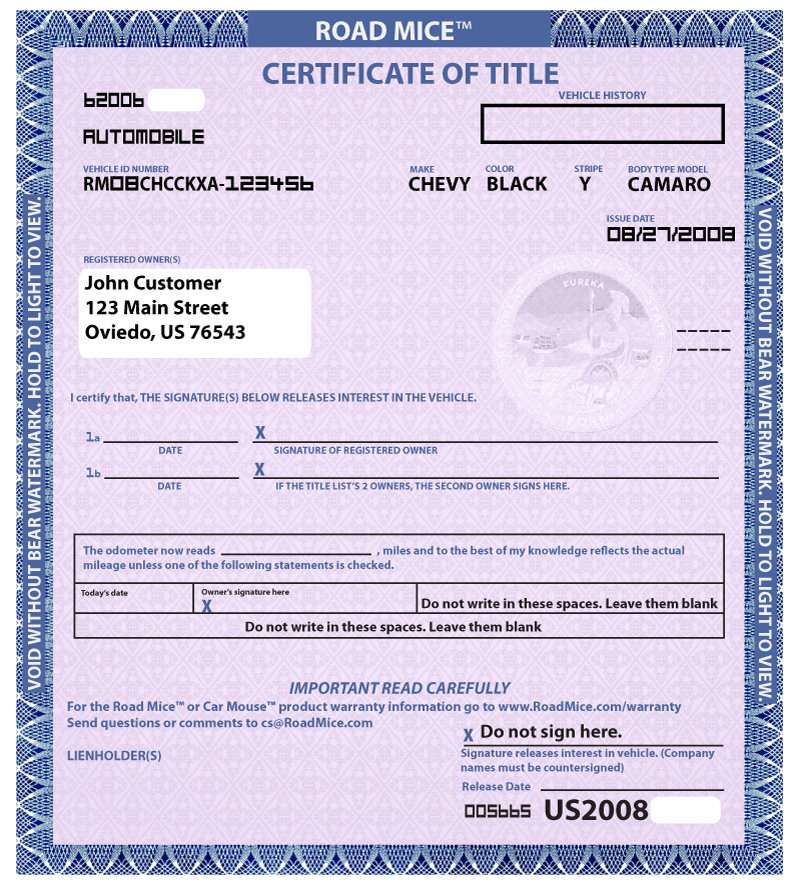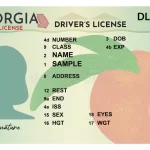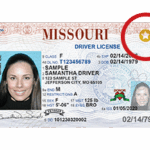Decoding the Title Transfer: A Comprehensive Guide to Filling Out Your Car Title Correctly

Buying or selling a car can be an exciting experience, but navigating the paperwork, especially the car title, can feel like deciphering a cryptic code. One wrong move, and you could face delays, fees, or even legal headaches. The car title is a crucial document that proves ownership, and filling it out accurately is essential for a smooth and legal transfer. This comprehensive guide will walk you through the process, demystifying each section and equipping you with the knowledge to confidently complete your car title.
Why is the Car Title So Important?
Think of the car title as the birth certificate of your vehicle. It’s the official document issued by your state’s Department of Motor Vehicles (DMV) or equivalent agency that establishes legal ownership. It contains vital information about the vehicle, including:
- Vehicle Identification Number (VIN): A unique 17-character code that identifies your specific vehicle.
- Make and Model: Details the manufacturer and specific model of the car.
- Year of Manufacture: The year the vehicle was originally produced.
- Owner’s Information: Name and address of the registered owner(s).
- Odometer Reading: The mileage recorded at the time of sale or transfer.
- Lien Information: Details about any outstanding loans or liens against the vehicle.
- Title Number: A unique identifier for the specific title document.
Without a properly transferred title, you cannot legally register the vehicle in your name, obtain insurance, or sell it in the future. A flawed title transfer can lead to disputes, legal complications, and potentially leave you holding a vehicle you can’t legally own or sell.
Understanding the Anatomy of Your Car Title
While car titles vary slightly from state to state, they generally contain the same essential sections. Familiarizing yourself with these sections is the first step towards a successful title transfer.
1. Seller’s Section (Assignment of Title/Transfer Section):
This section is the seller’s responsibility and requires meticulous attention. It’s where you, as the seller, officially transfer ownership to the buyer. Key elements include:
- Printed Name(s) of Seller(s): Ensure this matches the name(s) exactly as they appear on the front of the title. If multiple owners are listed, all must sign unless the title specifies “OR” between the names.
- Seller’s Signature(s): This is a critical element. Use a blue or black pen and sign exactly as your name is printed.
- Date of Sale: The date the sale is finalized and ownership transfers.
- Odometer Reading: This must be accurate and legible. Tampering with the odometer is a serious offense. Many states require a separate odometer disclosure form in addition to the reading on the title.
- Sale Price: The agreed-upon purchase price of the vehicle.
- Buyer’s Printed Name(s) and Address: Ensure this is accurate and complete.
- Buyer’s Signature(s): The buyer must sign to acknowledge receipt of the title and acceptance of ownership.
2. Buyer’s Section (Application for Title):
This section is primarily the buyer’s responsibility. It’s where you, as the buyer, provide information necessary for the DMV to issue a new title in your name. Key elements include:
- Printed Name(s) of Buyer(s): This must match the name(s) you want to appear on the new title.
- Buyer’s Address: Your current residential address.
- Driver’s License or Identification Number: This helps the DMV verify your identity.
- Date of Application: The date you are submitting the title transfer application.
- Signature(s) of Buyer(s): This confirms your application for a new title.
- Additional Information: Some states may require additional information, such as your date of birth, social security number (or a portion thereof), or a description of the vehicle’s intended use.
3. Lien Information (If Applicable):
If the vehicle has an outstanding loan, this section will contain information about the lienholder (the bank or financial institution that holds the loan).
- Lienholder’s Name and Address: This identifies the lender.
- Date of Lien: The date the lien was placed on the vehicle.
- Release of Lien: Once the loan is paid off, the lienholder must officially release the lien by signing and dating this section. This confirms that they no longer have a claim on the vehicle.
4. Odometer Disclosure:
As mentioned earlier, many states require a separate odometer disclosure form in addition to the odometer reading on the title. This form provides more detailed information about the vehicle’s odometer history and helps prevent odometer fraud. Be sure to check your state’s requirements and complete the necessary forms.
5. Vehicle Description:
This section contains information about the vehicle, including the VIN, make, model, and year of manufacture. This information is typically pre-printed on the title.
6. Title Number:
This is a unique identifier for the specific title document. It’s usually located prominently on the front of the title.
Now that you understand the different sections of the car title, let’s walk through the process of filling it out accurately.
Seller’s Responsibilities:
- Locate the Title: The original title is required for the transfer. Make sure you have it readily available. If you’ve lost the title, you’ll need to apply for a duplicate title from your state’s DMV before you can sell the vehicle.
- Review the Title: Before filling anything out, carefully review the title. Ensure all the information, such as the VIN, make, model, and year of manufacture, is accurate. If there are any errors, contact your DMV to correct them before proceeding with the sale.
- Fill out the Assignment of Title/Transfer Section:
- Printed Name(s): Clearly print your name(s) exactly as they appear on the front of the title.
- Signature(s): Sign your name(s) using a blue or black pen. Ensure your signature(s) match the printed name(s).
- Date of Sale: Enter the date the sale is finalized.
- Odometer Reading: Accurately record the odometer reading at the time of sale. Do not round up or estimate. If the odometer has exceeded its mechanical limits (rolled over), indicate this on the title and any required odometer disclosure forms.
- Sale Price: Enter the agreed-upon purchase price of the vehicle.
- Buyer’s Information: Clearly print the buyer’s name(s) and address.
- Complete the Odometer Disclosure (If Required): Fill out the separate odometer disclosure form if required by your state. Ensure all information is accurate and complete.
- Provide the Title to the Buyer: Once you have completed the seller’s section and any required odometer disclosure forms, give the title to the buyer.
- Keep a Copy: Make a copy of the completed title and any other relevant documents for your records. This can be helpful in case of any disputes or issues that may arise later.
Buyer’s Responsibilities:
- Receive the Title: Obtain the properly completed title from the seller.
- Review the Title: Carefully review the title to ensure all information is accurate and complete. Pay close attention to the seller’s information, the odometer reading, and the VIN.
- Fill out the Application for Title Section:
- Printed Name(s): Print your name(s) as you want them to appear on the new title.
- Address: Enter your current residential address.
- Driver’s License/Identification Number: Provide your driver’s license or identification number.
- Date of Application: Enter the date you are submitting the title transfer application.
- Signature(s): Sign your name(s) to confirm your application for a new title.
- Additional Information: Complete any additional information required by your state.
- Submit the Title and Application to the DMV: Take the completed title, application, and any other required documents (such as proof of insurance and payment for title transfer fees and taxes) to your local DMV.
- Receive Your New Title: The DMV will process your application and issue a new title in your name. This may take a few weeks, depending on your state’s processing times.
Common Mistakes to Avoid:
- Illegible Handwriting: Print clearly and legibly. If your handwriting is difficult to read, the DMV may reject your application.
- Incorrect Information: Double-check all information before filling it out. Even a small error can cause delays or rejection.
- Missing Signatures: All required parties must sign the title. If there are multiple owners, ensure everyone signs unless the title specifies “OR” between the names.
- Using the Wrong Pen: Use a blue or black pen. Avoid using pencils or erasable pens.
- Crossing Out or Erasing Information: If you make a mistake, do not cross out or erase it. Instead, void the title and obtain a new one from the DMV.
- Failure to Disclose Odometer Reading: Accurately record the odometer reading. Failure to do so can result in fines and legal penalties.
- Tampering with the Odometer: Tampering with the odometer is a serious offense and can result in criminal charges.
- Not Submitting the Title Promptly: Most states have a deadline for submitting the title transfer application. Failure to submit the title within the allotted time may result in penalties.
- Ignoring Lien Information: If the vehicle has a lien, ensure the lienholder has properly released it before transferring the title.
- Not Keeping a Copy: Always make a copy of the completed title and any other relevant documents for your records.
Specific State Requirements:
It’s crucial to remember that car title requirements vary from state to state. Always check with your local DMV or equivalent agency for specific instructions and regulations. Some states may have additional forms or procedures that you need to follow. Here are some examples of state-specific requirements:
- California: Requires a smog check certificate for most vehicles.
- Texas: Requires a Vehicle Inspection Report (VIR).
- Florida: Requires a Bill of Sale in addition to the title.
- New York: Requires a Vehicle Bill of Sale (Form DTF-802).
Addressing Common Scenarios:
- Lost or Stolen Title: If you’ve lost your car title, you’ll need to apply for a duplicate title from your state’s DMV. You’ll typically need to provide proof of ownership, such as your vehicle registration or insurance card, and pay a fee.
- Vehicle with a Lien: If the vehicle has a lien, the lienholder must release the lien before you can transfer the title. The lienholder will typically provide you with a lien release document that you’ll need to submit to the DMV.
- Gifted Vehicle: If you’re gifting a vehicle, you’ll still need to transfer the title. You may be exempt from paying sales tax, but you’ll need to provide documentation proving the gift, such as a gift letter.
- Inherited Vehicle: If you’ve inherited a vehicle, you’ll need to provide documentation, such as a copy of the will or probate documents, to transfer the title to your name.
- Out-of-State Title: If you’re buying a vehicle from out of state, you’ll need to follow your state’s procedures for transferring an out-of-state title. This may involve a vehicle inspection and additional paperwork.
When to Seek Professional Help:
While this guide provides comprehensive information, there are situations where seeking professional help is advisable:
- Complex Ownership Issues: If there are multiple owners, deceased owners, or complicated legal situations, consulting with an attorney or a title company can help ensure a smooth transfer.
- Unclear Title: If the title is damaged, altered, or contains errors, it’s best to seek professional advice before proceeding.
- Unfamiliar with the Process: If you’re unsure about any aspect of the title transfer process, don’t hesitate to contact your local DMV or a title company for assistance.
Conclusion:
Filling out a car title correctly is crucial for a legally sound and hassle-free transfer of ownership. By understanding the different sections of the title, following the step-by-step guide, and avoiding common mistakes, you can confidently navigate the process and ensure a smooth transaction. Remember to always check with your local DMV for specific state requirements and don’t hesitate to seek professional help when needed. With careful attention to detail and a little preparation, you can successfully decode the title transfer process and drive away with peace of mind.














